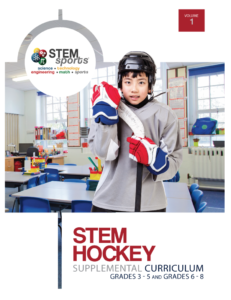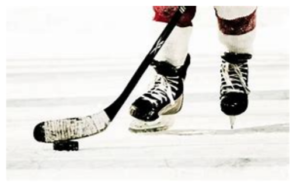
Believe it or not, Hockey is one of the few sports the STEM Sports® team has yet to produce a curriculum for. A sport that entails plenty of STEM concepts for students to wrap their minds around as they skate past the blue line and set-up their teammate with a centering pass. Needless to say, our team is excited and eager to develop STEM Hockey this fall. Let’s take a sneak peek at “how” STEM plays a crucial role in the fastest game on ice…
Because our curriculum is developed for students to understand the game at a relatively simplistic level – rink, stick, and puck – the following examples encompass exactly how and why STEM + Hockey make the perfect duo.
The Hockey Rink
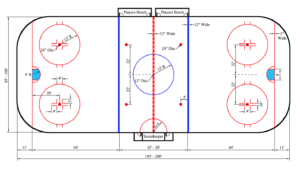
Grades: 3-5
Concept: Math: Measurements and Real World Multiplication
Objective: Students will explain how a hockey rink and its materials have changed over time. Students will calculate actual measurements by multiplying whole numbers using a scale. Students will identify similarities and differences from hockey’s first rinks to today’s rinks.
Standards: Common Core State Standard and National Standards for K-12 Physical Education
And for the more advanced student…
The Hockey Rink
Grades: 6-8
Concept: Math: Units and Area and/or Pythagorean Theorem
Objective: Students will compare and contrast which position on the ice requires the strongest and most accurate stick and the fastest skater by using distances on a coordinate plane system. Students will calculate the unknown distance of a right triangle using the Pythagorean Theorem
Standards: Common Core State Standards and National Standards for K-12 Physical Education
While the game involves plenty of math, such as Data and Graphing to analyze scoring trends on the ice, to Ratios and Probability to interpret probable outcomes in a game, the game also embodies several science, technology, and engineering components fundamental to STEM education. Some of these examples include:
Forces in Hockey
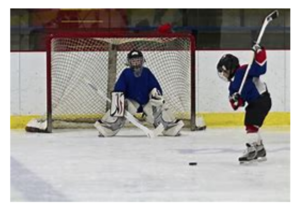
Concept: Science: Physics
Objective: Students will collect and graph data of a controlled experiment by using a line graph. Students will explain the relationship between velocity and kinetic energy by making a claim about the relationing with evidence and reasoning.
Standards: Next Generation Science Standards and National Standards for K-12 Physical Education
Composition of a Puck and Stick
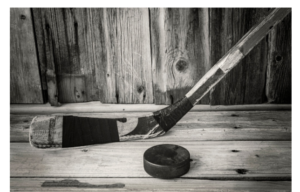
Concept: Engineering and Use of Technology
Objective: Students will examine the history, anatomy, and behavior of the hockey puck and stick. Students will use key ideas in the text about engineering to answer text-dependent questions explaining how the puck and stick have changed over time. Students will use key themes from the text to explain why the technology of the hockey puck and stick changed.
Standards: Next Generation Science Standards and National Standards for K-12 Physical Education.
The probability of the outlined examples being part of the STEM Hockey curriculum is fair to good. What we do know is STEM + Hockey is a perfect match for the classroom or on ice. Coming November 2022, be the first to make STEM Hockey part of your classroom or program!
